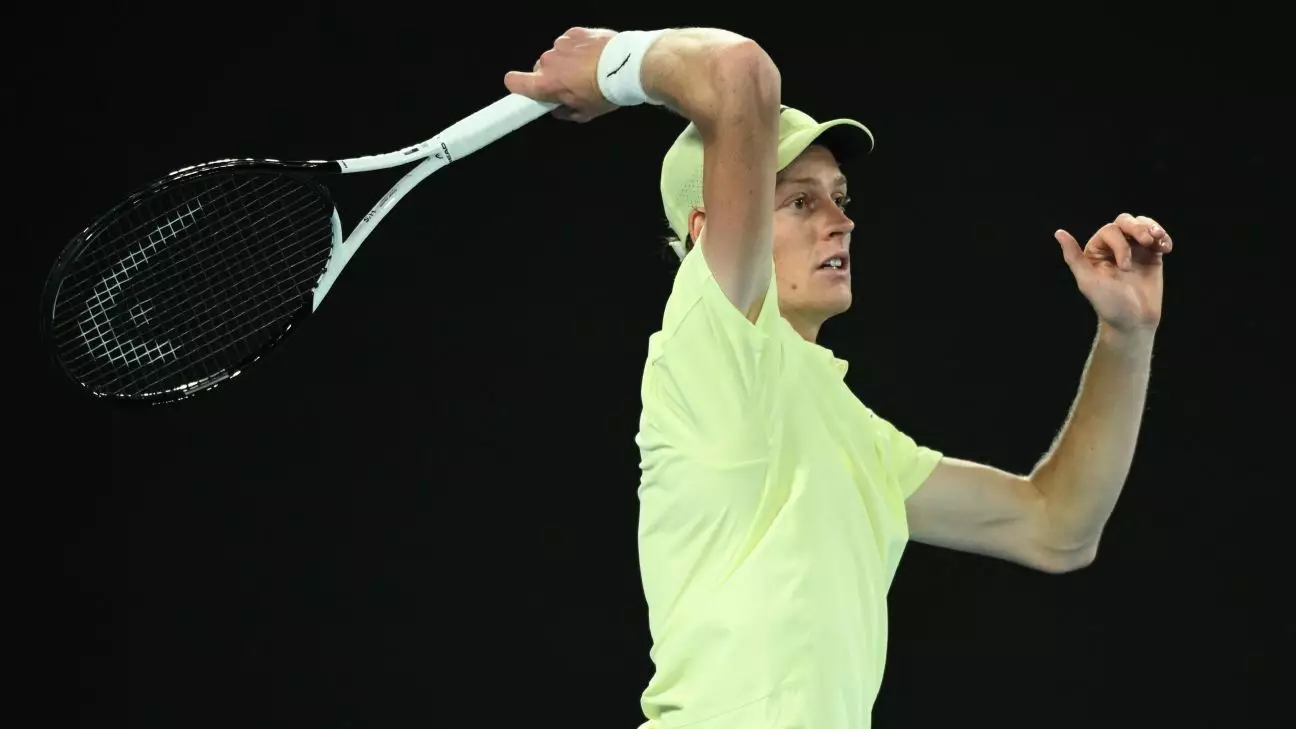In recent months, the world of tennis has been thrust into the spotlight due to a series of high-profile doping cases, notably involving players like Jannik Sinner and Iga Swiatek. These instances, where athletes faced suspensions for banned substances that they claimed entered their system inadvertently, have not only initiated debates about the integrity of sports but have also highlighted pressing concerns regarding the complexities of anti-doping regulations. As player anxiety mounts and questions regarding fairness arise, it is imperative to explore how these controversies are reshaping perceptions of doping within the sport.
Jannik Sinner: A Case Study in Controversy
Jannik Sinner’s recent three-month doping ban brought much-needed attention to an often misunderstood realm of sports. While Sinner has asserted that the anabolic substance clostebol made its way into his system through a massage from his physiotherapist, unflattering scrutiny remains. The marketplace of public opinion hints at a belief that he navigated the system in a manner that other players, especially those without his stature, might not be afforded. Compounding this perception was tennis legend Novak Djokovic’s frustration at being left uninformed about the case. Such sentiments disclose an alarming narrative—one suggesting that sporting justice may be selectively administered based on an athlete’s prominence.
The Dangers of Contamination: A Call for Caution
The increasing unease amongst players stems from a lack of clarity regarding what constitutes contamination, and how easily it can lead to a doping allegation. This is underscored by news that numerous players are now seeking advice from the International Tennis Integrity Agency (ITIA) on avoiding unintentional positive tests. This trend suggests a growing recognition of the precarious line athletes walk in their pursuit of excellence. The ITIA, although asserting their commitment to a fair playing field, is now faced with the significant task of educating players about the nuances of doping regulations. Their assertion of an “open-door policy” for inquiries indicates a responsibility they feel in the wake of these scandals, aiming to alleviate fears by providing resources that ensure players can make informed decisions about their health and training.
The Reaction of the Tennis Community
While some players are rallying around Sinner, believing in the innocence of their colleague, others are unconvinced. Serena Williams’ remarks, insinuating that she might have faced a far more severe penalty had she found herself in a similar situation, amplify the concerns about discrepancies in how doping cases are treated based on a player’s standing. Such commentary from prominent athletes contributes to an unsettling vibe of mistrust within the tennis community, suggesting that the protocols may lack the necessary rigor to uphold integrity consistently across ranks.
As Sinner prepares to return to competition, the psychological weight of the doping saga will likely be a pressing concern in his efforts to maintain form and focus. Relying on the support of his peers, including Rafael Nadal—who openly professed faith in Sinner’s character—may provide solace, yet the path forward remains fraught with challenges. The considerable burden of scrutiny will demand not just athletic prowess but also mental fortitude, substantially heightening individual pressure.
Creating a Culture of Accountability
The entire doping dialogue exposes a broader need for the sport to cultivate an environment centered on transparency and accountability. While regulations are essential, they must evolve concomitantly with the complexities introduced by modern training regimens and supplement markets. Higher awareness levels among athletes regarding their responsibilities, coupled with compassion towards those they ride alongside in the competition, could enable a revitalized approach to integrity in tennis.
By focusing on education rather than punishment, the tennis community stands to foster a culture that values fairness and inclusivity. Collaborative efforts across governing bodies, players, and stakeholders in sports medicine can lead to an era where the proactive investment in education may preempt many issues before they arise.
As tennis navigates this rocky terrain of doping controversies, the hope lies in emerging from these challenges with a reinforced dedication to integrity and fairness. Jannik Sinner’s case is both a warning and an opportunity— a chance for the sport to reassess its protocols and prioritize the well-being of the athletes who embody its spirit. Moving forward, the real challenge will be to mitigate the shadows of doubt cast upon players and ensure that the essence of competition remains unsullied by misunderstandings and mismanagement.


Leave a Reply